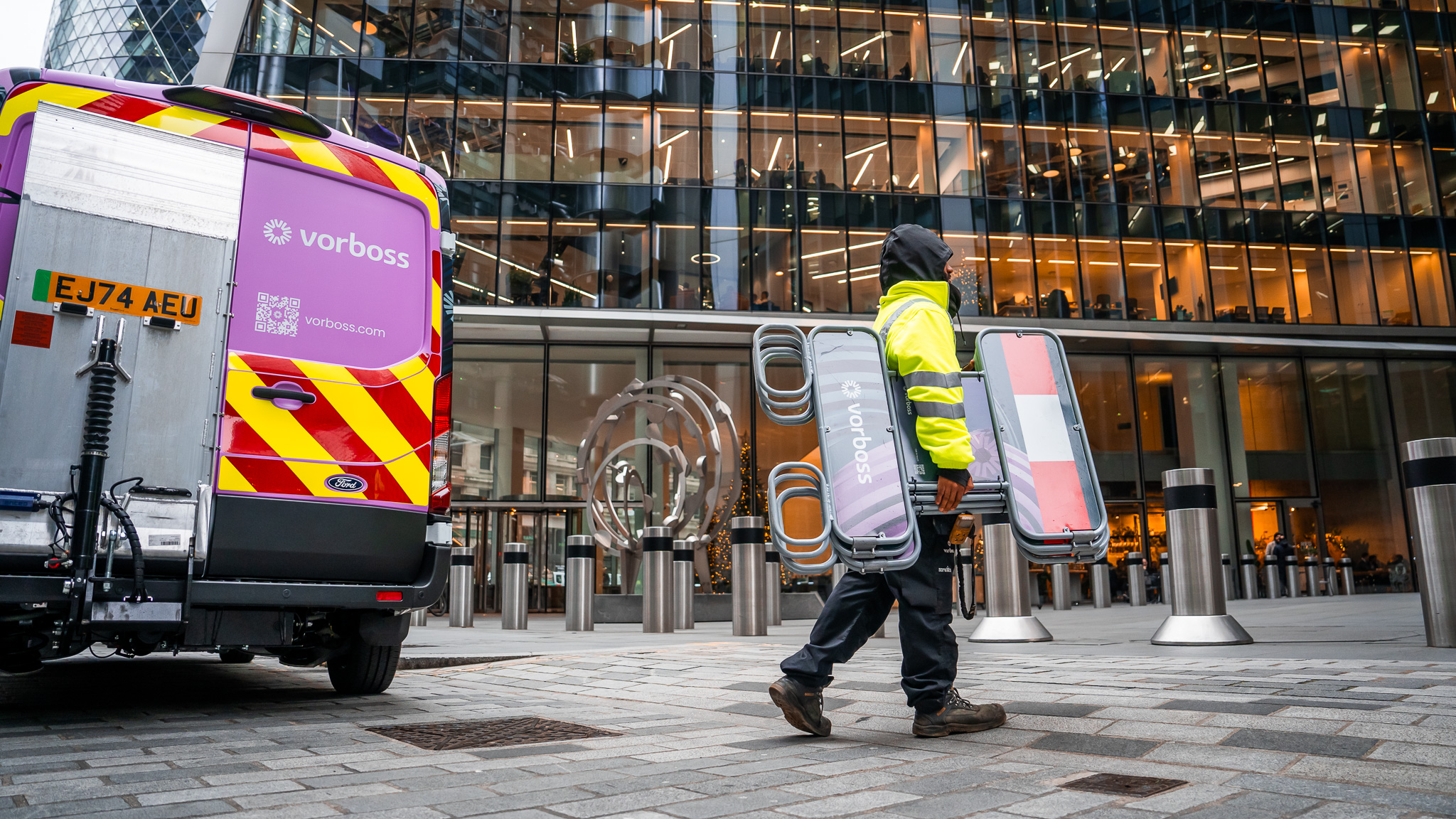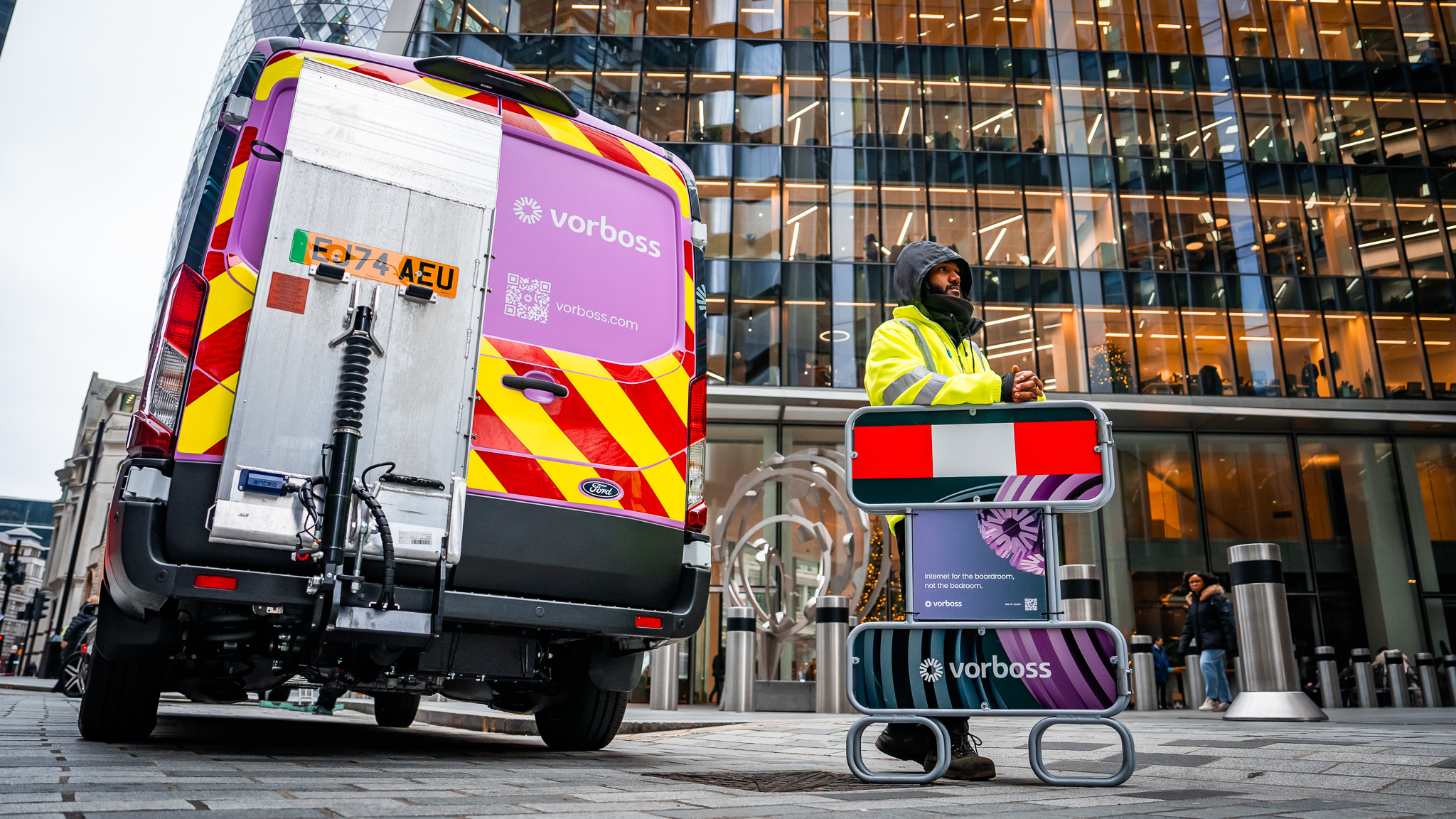How business fibre internet can cut costs & boost productivity
September 8, 2022
|
3
min read

Highlights
Vorboss is investing £250 million into London’s only dedicated business fibre network, providing 10Gbps minimum capacity and full coverage for Central London commercial buildings. Vorboss disrupts the status quo by giving ambitious London businesses direct access to essential fibre infrastructure, bypassing resellers and legacy infrastructure limitations.
Lagging applications, grinding downloads, and outages are a thing of the past for London’s enterprises. Vorboss has built a brand-new business fibre network dedicated exclusively to enterprises in Central London—revolutionising the city’s critical fibre infrastructure.
What does this mean for you? You can upgrade your current internet connection to improve your business operations.
Unleashing your ambitions

‘Internet connectivity has become the single most important utility for most businesses. Our network is designed for one purpose: provide the capacity that London needs.’ Tim Creswick, Vorboss Founder and CEO
By providing 10Gbps as standard, an industry first, businesses can operate with effectively zero bandwidth constraints. Internet Service Providers (ISPs) typically resell legacy infrastructure, but Vorboss has a brand-new network of fibre optic cables. We own the process end-to-end and sell directly to our customers.
Internet that scales
You have probably noticed that your business is increasingly reliant on technology and shifting towards cloud-based infrastructure. Is your current ISP able to keep up with your exponentially rising bandwidth demands? Your growing dependence on internet connectivity puts you in a vulnerable position.
‘Many businesses remain at the mercy of restrictive telecommunications products and business models. These legacy networks are a limiting factor in critical technology decisions, which can restrict growth. Our network is unrivalled in both scale and quality, and our sole focus is enabling business growth.’
A new fibre network
.avif)
Since 2020, we have put in more than 500 km of fibre optic cables in London. We are spending over £250 million to create a fibre network solely for commercial use. Businesses in Central London now have direct access to critical fibre infrastructure at a minimum of 10Gbps, up to 100Gbps.
This includes 22 Bishopsgate, Britain’s largest office building noted for its visionary approach to technology. Vorboss internet connectivity helped 22 Bishopsgate secure a WiredScore Platinum connectivity certificate, the highest possible stamp of approval.
Changing the status quo
Our approach to building the network is as disruptive as the network itself. We have created over 300 new jobs for Londoners in the last 18 months; for most, it is their first foray into telecoms. Much of this has been enabled by the 2019 change in regulation surrounding the use of existing duct infrastructure.
‘We’re proud to be in London and believe our team should reflect the diversity of our community. We knew this would only be possible if we attracted new people to this industry.’
Over the last 18 months, nearly 200 people have graduated from the Vorboss Academy, which is an accredited in-house programme designed to give people the skills to kickstart a career in the telecommunications industry.
We have the most diverse fibre optic installation team in the industry; nearly 40% of our field-based team are women, and we strive for gender balance across all job roles.
Internet connectivity in abundance

Our 10Gbps-standard fibre network has redefined London's business landscape, providing speed and capacity that eliminates bandwidth constraints. London’s economy, global standing, and legacy is intimately woven with its connectivity, so greater connectivity means a greater London for all.
Book a consultation to find out why businesses are switching to Vorboss.
Tell us about yourself so we can serve you best.
Got a question?
More articles

For many landlords and building managers, the word “wayleave” feels like the responsible route whenever a fibre circuit is being installed on their property. It sounds formal and safe – a neat legal box to tick.
In many cases, however, a wayleave adds unnecessary complexity and delays, frustrates tenants, and can expose landlords to long-term legal risks.
At Vorboss, we’ve connected thousands of office spaces across London without a wayleave, keeping landlords in full control and getting tenants online faster.

What is a wayleave?
A wayleave is a written agreement between a landowner and a telecoms operator. It gives the operator permission to install and keep equipment on private property.
What many people don’t realise is that signing a wayleave also activates “Code rights” under the Electronic Communications Code. These rights go beyond simple permission, they give the operator legal powers to stay on the property indefinitely, access it when needed, and even refuse removal of their equipment in certain situations.
For a typical connection into a commercial building in London, a wayleave can make the fibre installation process slower, more expensive, and limit the landlord’s flexibility long term.
Why a wayleave isn’t required for standard in-building fibre connections
For a standard in-building fibre connection serving a tenant, a wayleave isn’t a legal requirement. Important protections, like building access, fire safety, repairing any damage, and removing equipment, are already covered by the tenant’s lease and usual building rules.
If no wayleave is signed, no Code rights are triggered, meaning the landlord retains full control and the installation exists under a simple, fully revocable licence.
In practice, this gives landlords far more protection and flexibility:
- No legal lock-in – the telecoms operator has no long-term rights to stay or refuse removal.
- Landlords keep full control – equipment can be moved or removed when the building changes.
- Faster fibre installation – no time lost in drafting contracts or solicitor reviews.
- Happier tenants – connections go live quicker; tenants get to move in faster.
By contrast, signing a wayleave and granting Code rights introduces a complex and expensive legal process for any fibre removal or relocation. This can take at least 18 months, plus potential court or tribunal proceedings, making it slower, and far less flexible for the landlord.

Public services across central London are evolving, and the City of London Corporation is leading the way.
Whether you work, live or study in the Square Mile, you’ll soon feel the difference that faster, more dependable connectivity brings.

What is the Future Network Programme?
The City of London Corporation is rolling out the Future Network Programme, a major project to modernise its entire digital infrastructure and bring everything under one unified network.
From offices and schools to iconic green spaces like Hampstead Heath, cultural destinations like the Barbican, and historic markets such as Leadenhall and Old Spitalfields, this upgrade will mean more reliable connectivity across the City’s buildings and public spaces.
It also extends to essential services, including critical sites run by the City of London Police. This enhanced connectivity will support everything from secure communication systems to faster, more resilient networks for emergency operations.
Leading this transformation is Roc Technologies, supported by Juniper Networks and Palo Alto Networks; all powered by the Vorboss fibre network. Together, we’re bringing the City onto a modern digital foundation that’s ready to support its future.
Who the Future Network Programme benefits and how?
The programme is designed for everyone who depends on public services in the Square Mile:
- Students in City-run schools will have fast, reliable connectivity to fully access digital learning tools.
- Public-sector teams will experience smoother hybrid working, better access to online platforms, and more efficient collaboration across locations.
- Residents and visitors will see improvements in public Wi-Fi, digital services, and online access in libraries, community hubs, and other shared spaces.
- The City of London Police will gain a more secure, faster and resilient network that enhances CCTV reliability and enables more effective frontline operations.

.avif)

.avif)

